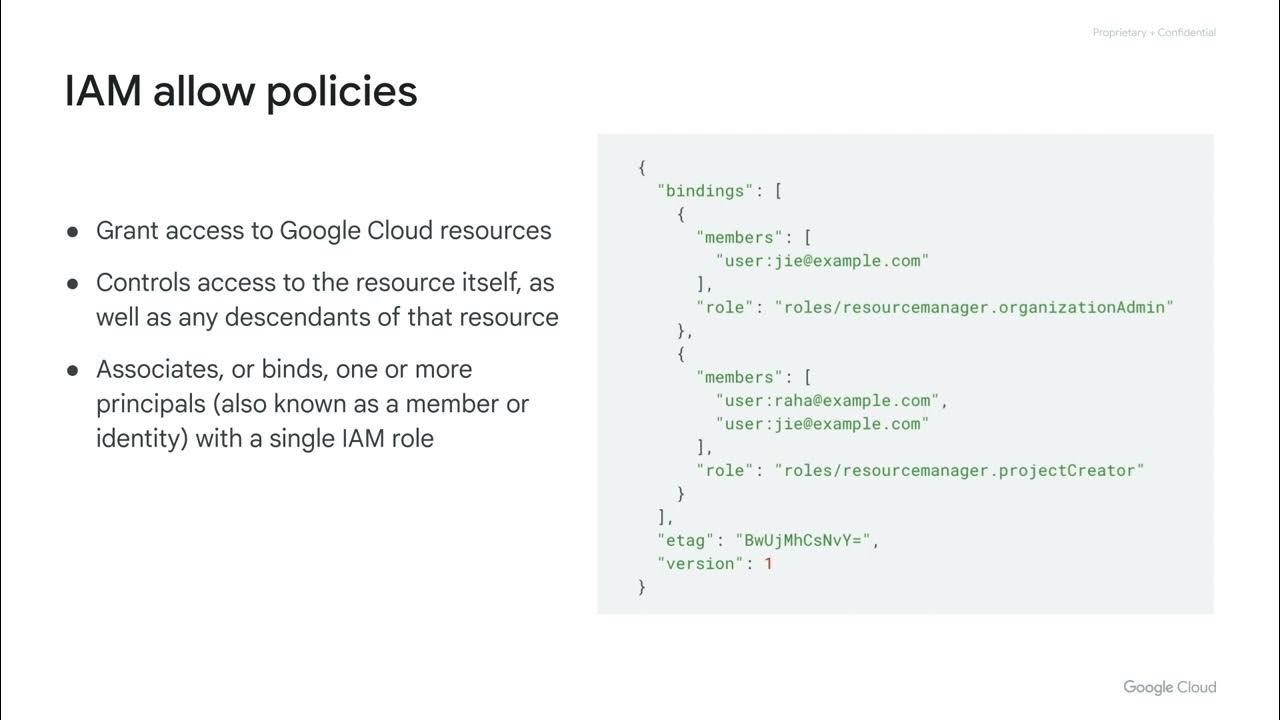Google Cloud billing
Summary
TLDRThis video script discusses Google Cloud billing, explaining how billing is tied to projects with linked accounts. It outlines billing account features, including sub accounts for organizing client projects and managing expenses. Tools such as budget limits, alert notifications, expenditure reports, and quotas are highlighted as ways to control costs and prevent overconsumption of resources. The video also covers types of quotas—rate and allocation—and their functions in managing API calls and resources. It concludes by recommending the Google Cloud Pricing Calculator for cost estimation.
Takeaways
- 😀 Billing in Google Cloud is set at the project level, where each project is linked to a billing account.
- 😀 A billing account can be linked to one or more projects, but projects without a billing account can only use free services.
- 😀 Billing accounts are automatically charged and invoiced either monthly or when certain thresholds are reached.
- 😀 Sub accounts can be used to separate billing by project, useful for resellers who manage multiple clients.
- 😀 To avoid running up high bills, you can define budgets either at the billing account or project level.
- 😀 Budgets can be fixed or based on metrics like a percentage of the previous month’s spend.
- 😀 Alerts can be set to notify you when your expenses approach budget limits, commonly set at 50%, 90%, and 100%.
- 😀 The Reports tool in Google Cloud Console provides a visual representation of expenditure by project or service.
- 😀 Google Cloud implements quotas to prevent over-consumption of resources, either due to errors or malicious activity.
- 😀 There are two types of quotas: rate quotas (reset after a specific time) and allocation quotas (limit the number of resources in a project).
- 😀 Rate quotas reset after a specified period (e.g., the GKE service has a 1,000 calls per 100 seconds limit), while allocation quotas govern the number of resources in a project (e.g., 5 VPC networks by default).
- 😀 Quotas can be adjusted by requesting an increase through Google Cloud Support if needed.
- 😀 For estimating cloud computing costs, users can utilize the Google Cloud Pricing Calculator available at cloud.google.com/products/calculator.
Q & A
What is Google Cloud billing based on?
-Google Cloud billing is established at the project level. Each Google Cloud project is linked to a billing account, which is where you configure all billing information.
Can a Google Cloud project be linked to multiple billing accounts?
-Yes, a billing account can be linked to zero or more Google Cloud projects. However, projects that aren’t linked to a billing account can only use free Google Cloud services.
How are billing accounts charged?
-Billing accounts are charged automatically and invoiced either monthly or based on specific threshold limits, whichever comes first.
What are billing sub-accounts used for in Google Cloud?
-Billing sub-accounts can be used to separate billing by project. They are especially useful for customers who resell Google Cloud services and want to manage different clients' billing separately.
How can I avoid accidentally running up a large Google Cloud bill?
-Google Cloud provides several tools to help prevent unexpected charges. These include setting budgets, creating alerts when costs approach the budget, and using the Reports tool to monitor expenditures.
What is the role of budgets in managing Google Cloud billing?
-Budgets in Google Cloud can be defined at the billing account level or project level. They can be fixed or tied to another metric, such as a percentage of the previous month’s spend.
How do alert notifications work in Google Cloud billing?
-You can set up alerts to notify you when your costs approach the budget limit. For example, with a budget limit of $20,000 and an alert at 90%, you’ll receive an alert when costs reach $18,000.
What is the purpose of the Reports tool in Google Cloud?
-The Reports tool in the Google Cloud console provides a visual way to monitor your expenditures based on specific projects or services.
How do quotas help in managing resource consumption in Google Cloud?
-Quotas in Google Cloud prevent over-consumption of resources due to errors or malicious attacks. They are applied at the project level and include rate quotas and allocation quotas.
What is the difference between rate quotas and allocation quotas in Google Cloud?
-Rate quotas govern the rate of API calls and reset after a specific time. Allocation quotas control the total number of resources that can be used in a project, such as the number of Virtual Private Cloud networks.
Can I change the quotas set in Google Cloud?
-Yes, although projects start with default quotas, you can request an increase for certain quotas through Google Cloud Support if necessary.
How can I estimate the cost of using Google Cloud services?
-You can use the Google Cloud Pricing Calculator available at cloud.google.com/products/calculator to estimate your cloud computing costs.
Outlines

This section is available to paid users only. Please upgrade to access this part.
Upgrade NowMindmap

This section is available to paid users only. Please upgrade to access this part.
Upgrade NowKeywords

This section is available to paid users only. Please upgrade to access this part.
Upgrade NowHighlights

This section is available to paid users only. Please upgrade to access this part.
Upgrade NowTranscripts

This section is available to paid users only. Please upgrade to access this part.
Upgrade Now5.0 / 5 (0 votes)





